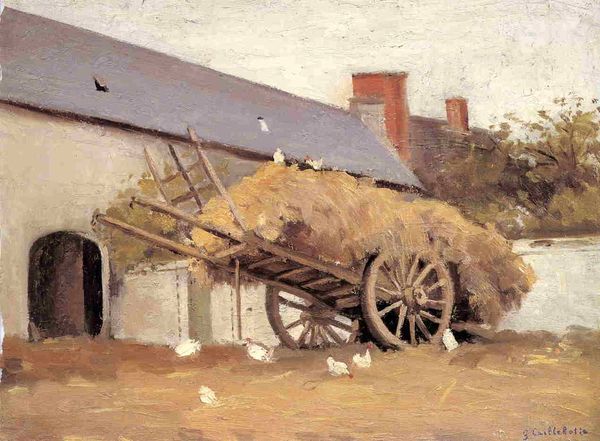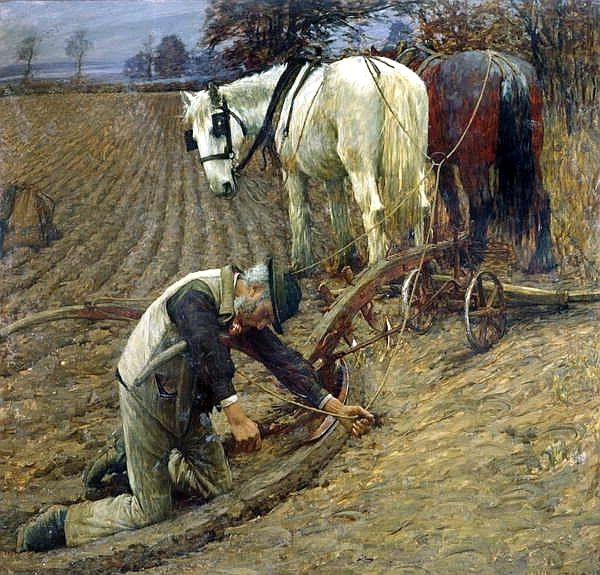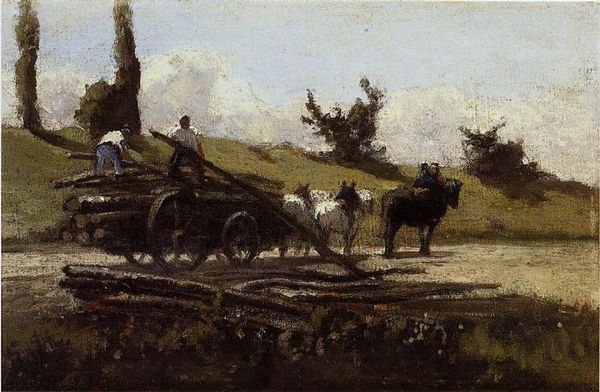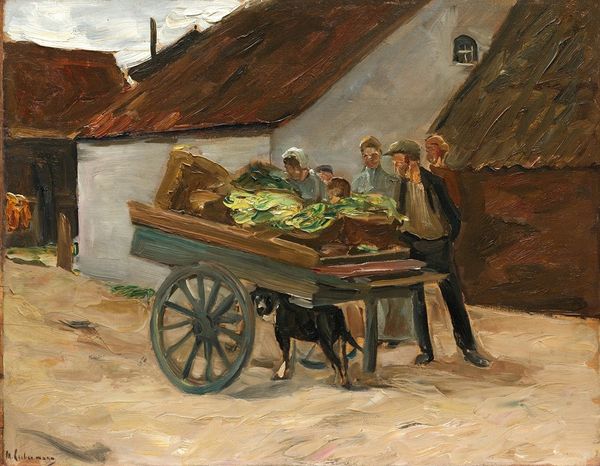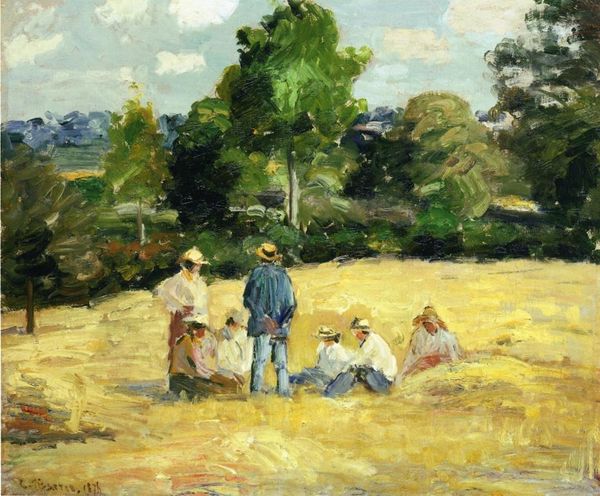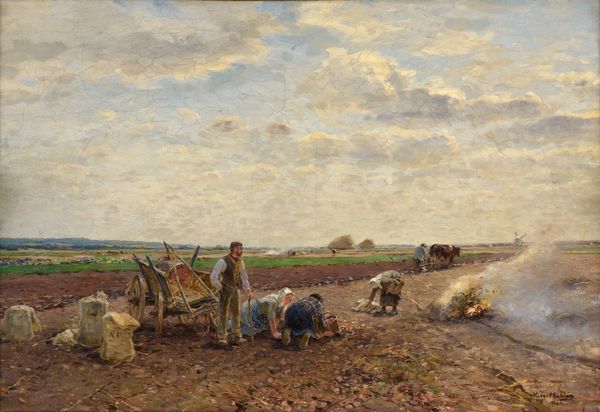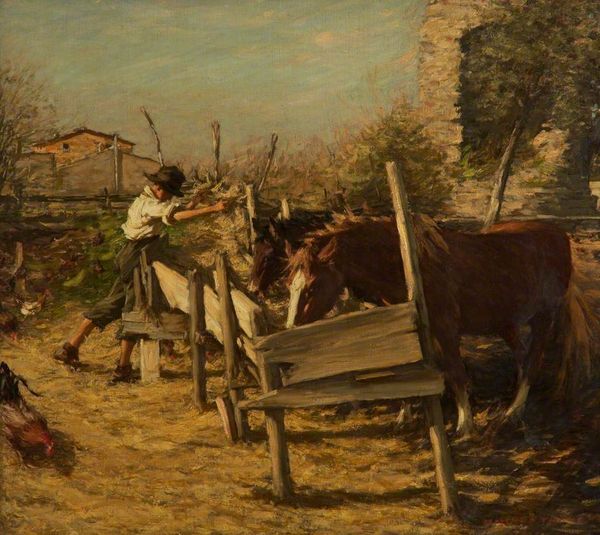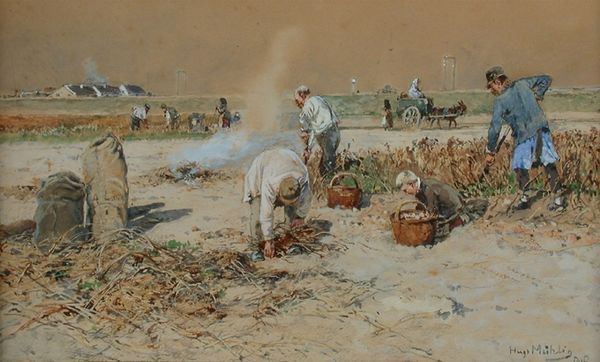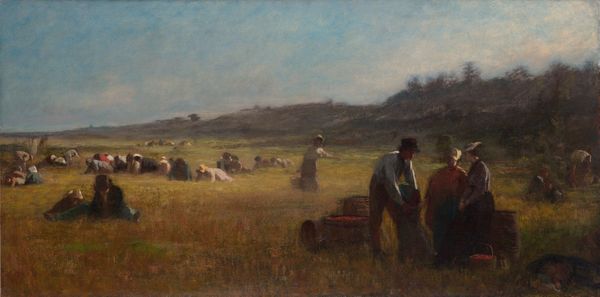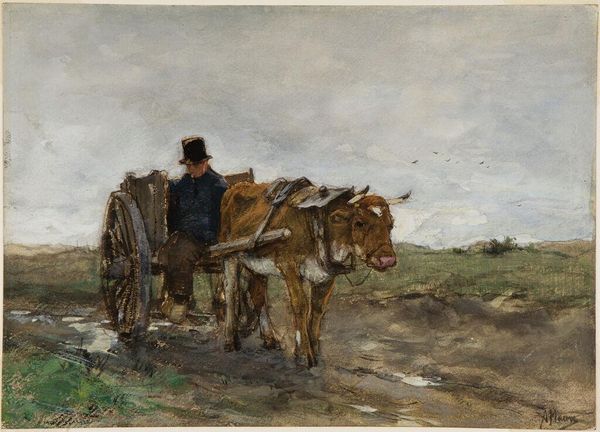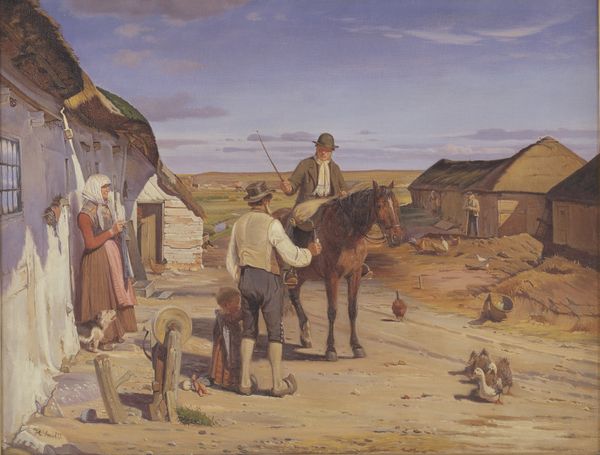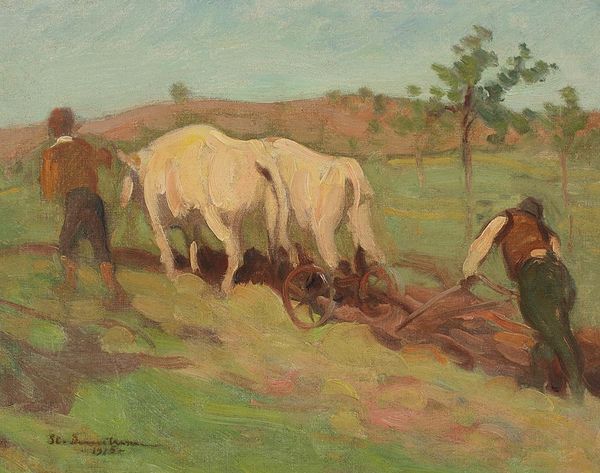
oil-paint
#
animal
#
oil-paint
#
landscape
#
figuration
#
social-realism
#
oil painting
#
group-portraits
Copyright: Alla Horska,Fair Use
Curator: Alla Horska’s 1950 oil painting, “Harvesting,” presents a bustling rural scene. What are your initial thoughts on this work? Editor: My immediate feeling is of abundance and collectivity. The golden hues of the harvested crop radiate warmth. Curator: That resonates. Consider the socio-political backdrop. Horska created this during the height of Socialist Realism in Ukraine. Collective farms were idealized, so this imagery served a propaganda function—yet how might she be also representing a shared cultural identity rooted in rural life? Editor: Certainly, the image is replete with agrarian symbols of collective labor and the rhythm of the seasons. The loaded cart, the thresher…are those collective symbols, too, signaling unity? Curator: The people are the central focus; the group of women atop the thresher and other figures at work imply collective power. This emphasis aligned with Socialist Realism but perhaps offered Horska a space to reflect local identities and working-class solidarity. It seems like she is also trying to demonstrate a certain feminist identity given the central roles of the women presented here. Editor: Indeed. Notice how the golden hay appears almost as if its giving birth to more golden hay on the ground—abundance in spades, but there may also be religious allegories here, as hay is often perceived in agricultural regions to represent the "golden years". Curator: A keen insight. But considering that there is not the typical Soviet grandiosity, the everyday-ness of this scene, could suggest Horska quietly emphasized shared labour and local community identity and strength over imposed Soviet Ideals. There also may be an allegorical depiction of "Mother Earth" providing a fruitful outcome. Editor: I think so, especially if we also see the symbolism within the bovine presence, a consistent presence within Ukrainian folk lore of being guardians and protectors of their homeland, and people. The symbols speak powerfully to a cultural inheritance separate from political agenda. Curator: Looking at the material realities, and these images that were historically designed to influence politics, our dialogue reveals the possibility of reading social and feminist narratives within socialist impositions and the power of a symbol to carry both personal and collective meaning. Editor: Absolutely. It is quite remarkable how such simple components like the colour palettes, use of the landscape, the thresher itself, a bovine all culminate into so much, leaving a truly meaningful impression.
Comments
No comments
Be the first to comment and join the conversation on the ultimate creative platform.
